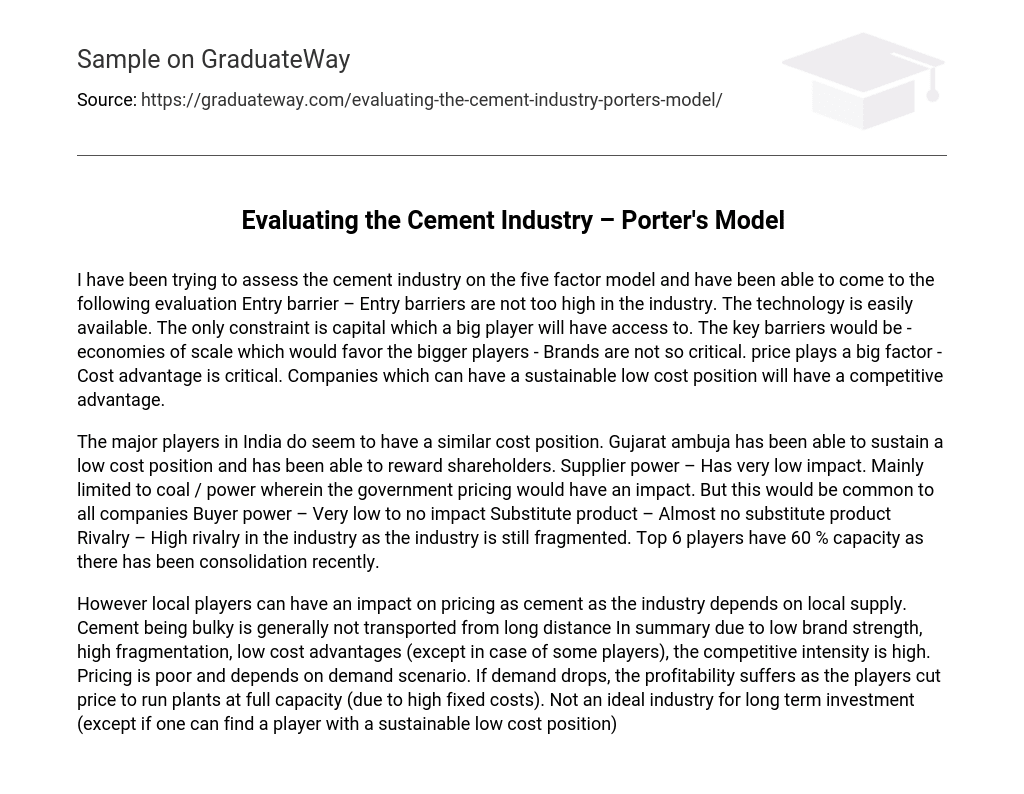I have been trying to assess the cement industry on the five factor model and have been able to come to the following evaluation Entry barrier – Entry barriers are not too high in the industry. The technology is easily available. The only constraint is capital which a big player will have access to. The key barriers would be – economies of scale which would favor the bigger players – Brands are not so critical. price plays a big factor – Cost advantage is critical. Companies which can have a sustainable low cost position will have a competitive advantage.
The major players in India do seem to have a similar cost position. Gujarat ambuja has been able to sustain a low cost position and has been able to reward shareholders. Supplier power – Has very low impact. Mainly limited to coal / power wherein the government pricing would have an impact. But this would be common to all companies Buyer power – Very low to no impact Substitute product – Almost no substitute product Rivalry – High rivalry in the industry as the industry is still fragmented. Top 6 players have 60 % capacity as there has been consolidation recently.
However local players can have an impact on pricing as cement as the industry depends on local supply. Cement being bulky is generally not transported from long distance In summary due to low brand strength, high fragmentation, low cost advantages (except in case of some players), the competitive intensity is high. Pricing is poor and depends on demand scenario. If demand drops, the profitability suffers as the players cut price to run plants at full capacity (due to high fixed costs). Not an ideal industry for long term investment (except if one can find a player with a sustainable low cost position)





